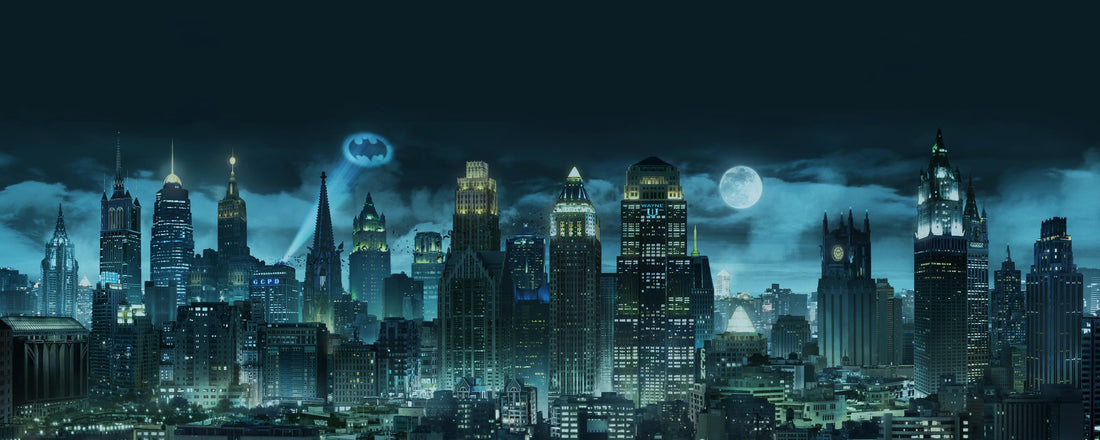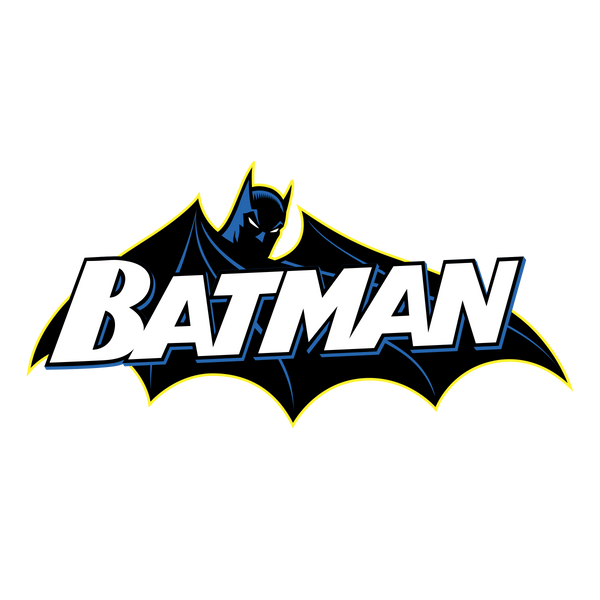
Gotham City: The Cursed City at the Heart of the Batman Universe
When you think of Batman , another name immediately springs to mind: Gotham City . More than just a setting, Gotham is a living entity, a character in its own right in the Dark Knight's universe. With its dark alleys, looming skyscrapers, and neighborhoods riddled with corruption, the city embodies the eternal struggle between light and shadow.
From its earliest appearances in comics, Gotham has been conceived as a sprawling metropolis, inspired by New York , Chicago , and even Victorian London . This mix results in a city that is both familiar and unreal: a place where crime thrives, justice is fragile, and a single masked man tries to maintain the balance.
But Gotham isn't just the setting for Batman's adventures. It's also the source of his traumas, the home of his most valuable allies like James Gordon and Alfred Pennyworth , and above all, the favorite playground of his greatest enemies. From the Joker to Bane , including the Scarecrow , everyone finds in Gotham the ideal breeding ground to develop their obsessions.
A city symbolizing urban decadence
Gotham is constructed as an allegory. Each district represents a facet of society: the skyscrapers of the upper middle class, the ghettos where poverty fuels crime, the foggy docks where weapons and drugs are traded, and of course the disturbing Arkham Asylum , a mental asylum housing the most dangerous criminals in the DC universe.
This unique atmosphere is reflected in merchandise that captures the city's dark, gothic aesthetic. Whether it's Gotham posters ,Batman duvet covers evoking its ominous nights, or puzzles depicting the city's gloomy skyline, Gotham has become a true visual icon of pop culture.
Gotham City's iconic neighborhoods
Gotham is so fascinating because it's made up of legendary locations that have become landmarks for Batman fans. Each neighborhood, each building tells a part of the Dark Knight's story.
Arkham Asylum: Heart of Madness
It's impossible to talk about Gotham without mentioning Arkham Asylum . This psychiatric hospital houses the city's most dangerous and unstable criminals: the Joker , Two-Face, Poison Ivy, and the Scarecrow. Arkham isn't just a place of confinement: it's a character in its own right, a symbol of the latent chaos that constantly threatens Gotham.
Its representation in comics, films and video games has largely contributed to making it a cult place, notably thanks to the video game saga Batman: Arkham , which immerses the player in its disturbing corridors.
Wayne Tower and the Duality of Bruce Wayne
At the heart of the financial district stands Wayne Tower , the seat of the Wayne family's economic power. It embodies Bruce Wayne's philanthropic legacy, but also the discord between the billionaire philanthropist and the masked vigilante. Wayne Tower is a beacon of hope in a city riddled with corruption, but also a prime target for supervillains.
Fans of merchandise appreciate Batman figurines that represent this duality: the dark suit of the vigilante versus the sophisticated elegance of Bruce Wayne.
Crime Alley: The Founding Trauma
In a dark alley in Gotham known as Crime Alley , Bruce Wayne's parents were murdered. This tragic event is the origin of the birth of Batman. Crime Alley symbolizes both Bruce's inner pain and the promise he made to protect his city from crime.
This location, often revisited in adaptations, reminds us that Gotham is a city where shadow always dominates the light. This is also why fans love to see this dramatic passage in posters illustrating Batman's origins or in the iconic costumes that perpetuate this legend.
Gotham Docks and Port
Often depicted as a hub of trafficking and conspiracy, Gotham's docks are an ideal playground for criminals in the underworld. It's here that Batman often emerges from the shadows to dismantle illegal operations, whether smuggling contraband, weapons, or drugs.
These industrial decors contribute to the city's visual identity and are even reflected in certain derivative products, such as Batman lamps that recall the pale lighting of warehouses, or wall stickers illustrating the gloomy skyline of the docks.
Gotham City: more than a setting, a character in its own right
Unlike other fictional cities, Gotham isn't just a setting for Batman's adventures. It's vibrant, oppressive, and unpredictable. It's often described as a character in its own right, as its identity influences the stories and heroes who live there.
A Batman Mirror City
Gotham is a reflection of Bruce Wayne's inner turmoil. Its darkness, rampant crime, and institutional corruption all reflect the pain and rage of his masked vigilante. Arguably, without Gotham, there would never have been a Batman. It's because this city is corrupted that Bruce found a reason to fight.
This symbiotic relationship is at the heart of many stories, whether in comics or films.Gotham duvet covers and Batman throws often feature the city's dark imagery, proving that its aesthetic even inspires everyday objects.
A unique atmosphere in films
Each director has offered their own vision of Gotham City, and it's this diversity that reinforces the myth. Tim Burton made it a nightmarish, gothic metropolis where every alleyway seems to hide a threat. Joel Schumacher, on the other hand, offered a more colorful, almost theatrical version. Christopher Nolan took a realistic approach, filming Gotham as a contemporary metropolis, inspired by Chicago and New York. Finally, Matt Reeves, with The Batman , gave the city a sticky, oppressive, neo-noir atmosphere.
These contrasting visions demonstrate Gotham's ability to transform without ever losing its essence. This makes it one of the most fascinating fictional cities in popular culture, on par with Metropolis or Star City in the DC Universe. To extend the experience, our Gotham City posters allow you to hang these atmospheres directly in your universe.
Gotham, the cradle of heroes and villains
Gotham didn't just shape Batman. It also birthed his greatest enemies: the Joker, the Penguin, Catwoman, the Riddler... Each villain is a twisted response to the city's flaws. Gotham acts as an incubator for chaos, revealing the worst in humanity while pushing Bruce Wayne to be his best.
This is also where Batman's gallery of villains takes on its full meaning: they would not be the same without this sick city, the permanent theater of their madness.
Gotham City in popular culture
Gotham is so fascinating because it has long since transcended the confines of comics. It has become a universal symbol of the struggle between light and shadow. Films, TV series, video games, toys, and merchandise: Gotham is everywhere, recognizable at a glance.
Cult franchises like the Arkham saga in video games have made Gotham an interactive playground, where fans can explore its streets, rooftops, and alleyways. In animation, it's a timeless setting, from the 90s series to more modern creations like Harley Quinn or Gotham Knights . Even outside of DC, Gotham is often cited as a reference whenever a dark and corrupt city is mentioned.
Conclusion – Gotham, eternal capital of darkness
Gotham City isn't just Batman's home: it's his raison d'être. Its darkness fuels his fight, its inhabitants shape his trials, and its oppressive atmosphere lends weight to his role as a vigilante. Every writer, director, and artist who has tackled it has contributed to expanding this urban myth, now anchored in the global collective imagination.
From its grimy alleyways to its stifling skyscrapers, Gotham remains a battleground where hope always survives, carried by one man who refuses to give up. A city where every shadow hides a threat, but also a promise: the one watched over by the Dark Knight, ready to stand against injustice.
